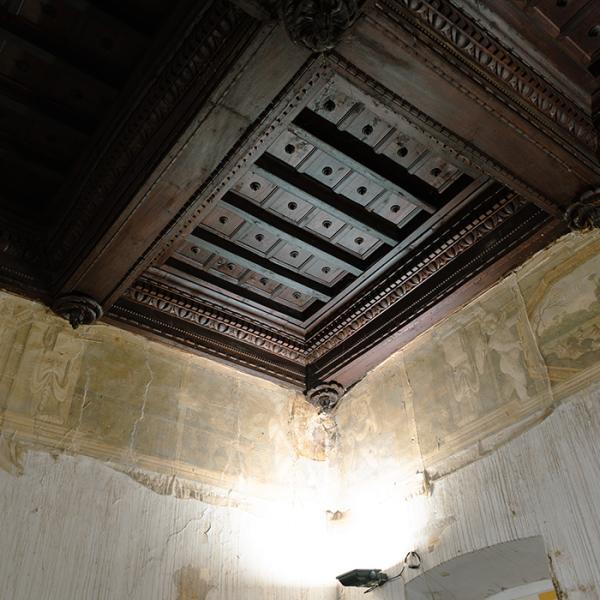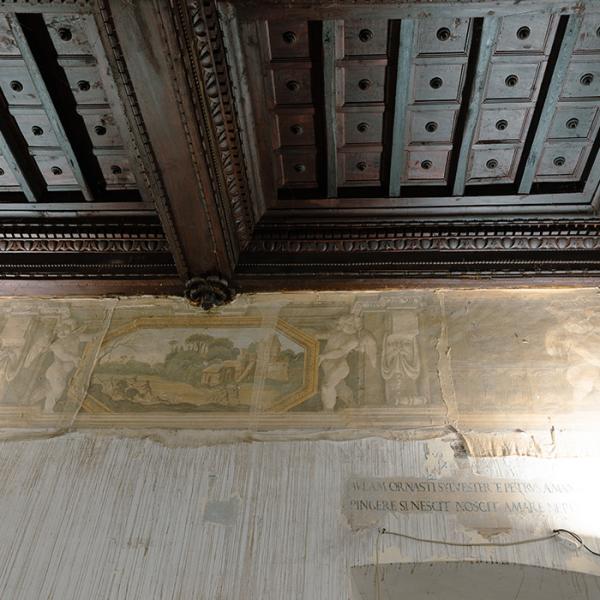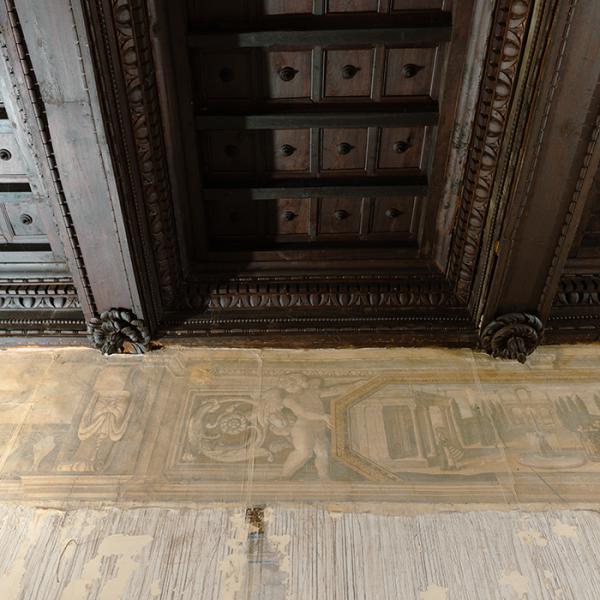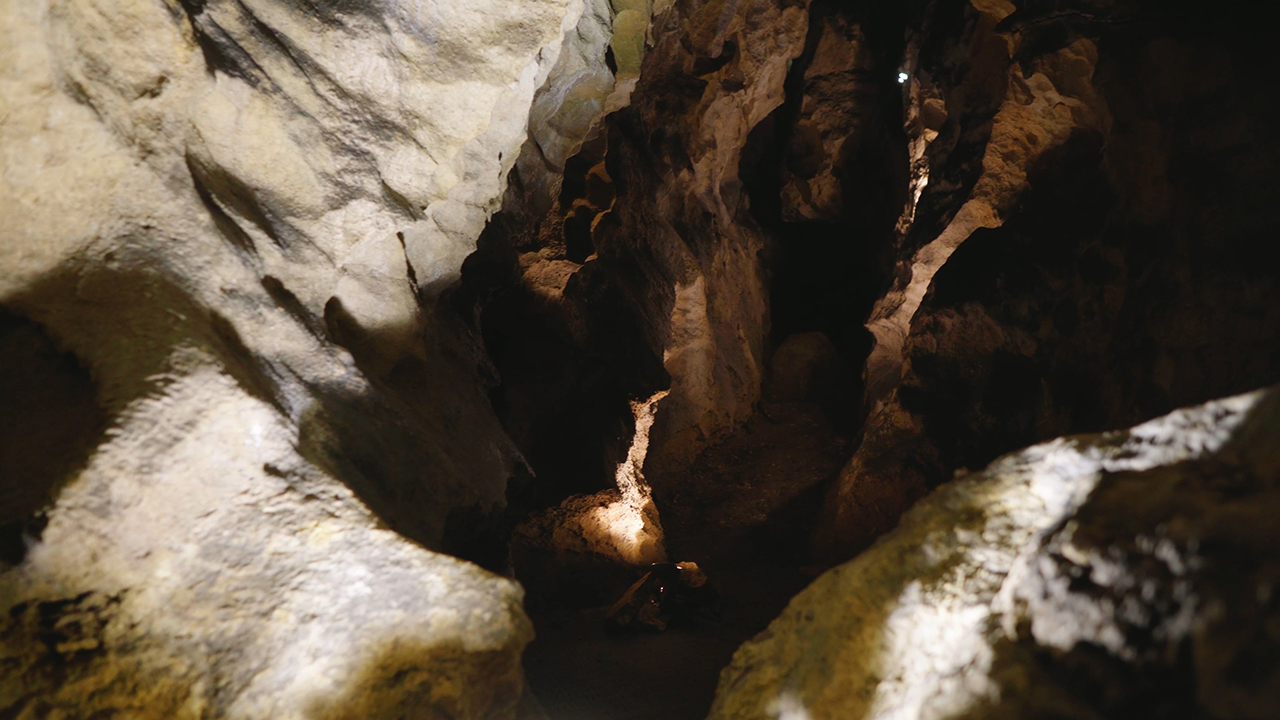The 17th century building is an interesting block construction with a small central courtyard and a frescoed main floor.
On the lintel of the fireplace on the ground floor one can read the names of Pietro and Silvestro Spada, who were evidently responsible for the construction of the Palace. On one of the tiles visible on the ceiling of the internal staircase which leads to the upper floor, is the inscription “PETRUS SPADA DE ANNO 1642 FECIT RESTAURARI” (Petrus Spada had it restored in the year 1642); on a second tile is the coat of arms of the Spada family: a Samnite shield with a lion running through the field, while on the cymatium is a helmet crowned by an arm brandishing a sword.
On the first floor of the building, an anonymous painter frescoed the rooms with biblical scenes dating back to 1637. The same artist, commissioned by Pietro and Silvestro Spada, also frescoed the main floor, with a cycle of works also dating back to 1637. The decorations, which cover all the walls of the living room but are partially concealed by plastering, depict scenes of hunting, the prodigal son, merchants at the harbour and a glimpse of court life.






